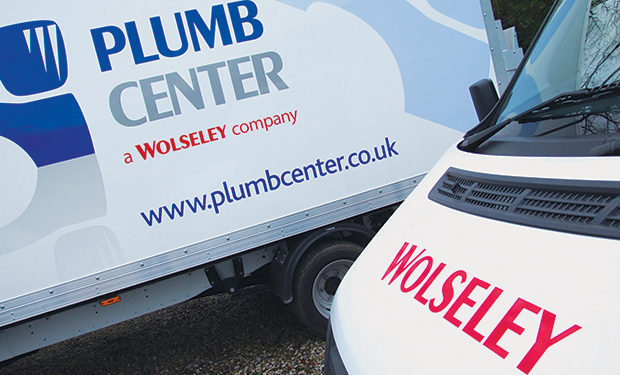Constant advances in technology enable providers of employee benefits portals to continue to adapt and change their products. But selecting the right one can be like trying to hit a moving target.

If you read nothing else read this…
- Prior to selecting an online benefits portal, employers should look at the market options.
- They should also work to negotiate competitive deals with existing providers.
- Make a plan the portal should achieve before conducting a tender.
- Key aspects for employers to think about are accessibility and design.
Benefits professionals must choose a portal with the most appropriate design, feel and functionality for their organisation because these are the factors that will determine its ability to increase the take-up of benefits and engage staff with their package.
This is far from easy when faced with several different portals designed to help employers manage flexible benefits plans, voluntary benefits offering or an entire total reward package, which may also include non-monetary perks such as training or career development.
Conduct a beauty parade
One way of researching the market is to conduct a beauty parade with several providers. This is when an employer invites several providers to come to their workplaces and pitch their offerings. The topics discussed during the presentations typically include: usability, design, cost and how the product would complement an employer’s benefits strategy and employer brand.
It is important for employers to choose a provider they have a good rapport with, rather than basing their selection on cost alone.
Henk Verhoek, head of reward at British Sugar, which uses provider Gee7, says: “Look at the market and look at a number of suppliers. Focus on those that can work with you. Pick one that really gels with you.”
Even a supplier that is considered to be one of the best in the market might not offer a portal that matches the job at hand and meets the organisation’s needs and objectives, adds Verhoek.
Exploit existing relationships
Most organisations will have long-term relationships with providers that already supply benefits and other services. This may mean they can negotiate more competitive deals on portals, which are often incorporated into a provider’s flexible and voluntary benefits offering.
Employers can also obtain significant discounts on benefits portals by taking part in a trial of a newly developed product with groups of employees ahead of a full roll-out. For example, Nottingham City Transport trialled a new portal developed by its existing flex provider Personal Group.
Mick Leafe, HRdirector at Nottingham City Transport (NCT), says: “We had that existing relationship with the provider so we did not need to go out to tender. Personal Group came to us and said [it was] triallinga new system and wondered if we would be interested.
“There was already that trust and confidence in the benefits, the system and the manual work.”
What objectives does the portal need to achieve?
Employers need to set out exactly what they want the portal to achieve. For example, it may form part of measures to increase benefits take-up and engagement, reduce administration or create an employee benefits brand.
It is also important to get feedback from employees and providers ahead of the launch so tweaks can be made, says Amanda Bullough, reward consultant at Siemens.
“In HR and reward, we always want to move fast to get the latest technology, but having a clear logic as what to do with it is important,” she explains. ”Then you can judge it over a period of 12, 18 and 24 months to see if you have reached those targets and been successful.”
Employers should also think about how the portal will be used to communicate benefits. Will it feature online total reward statements? Does it need to be compatible with mobile phones and tablets? Should it have the functionality to send information out via text, email and social media sites?
Portals should provide detailed information about the benefits employees receive, as well as those they have yet to take up.
British Sugar’s Verhoek says: “Providers can help tailor the communications but it is about going above and beyond to get the best results.”
Accessibility and design is crucial
Many providers offer bespoke tailoring so that the online portal is synonymous to an employer’s brand. Other design features could include modelling tools that enable employees to see the impact benefits such as pensions, individual savings accouts (Isas) and salary sacrifice arrangements could have on their financial situation in the short and long term.
It is also likely that employees will need to access the portal from a range of mobile devices, including smartphones and tablets. This can be a great way of boosting take-up. When NCT launched its new portal, 300 staff registered on their mobile.
Leafe says: “Employees use either their smartphone or tablet devices to access the portal now, which is really interesting to see. It is really encouraging because many of our staff do not have access to a computer at work.”
Simon Naylor, group reward manager at Travis Perkins, adds: “The design and accessibility is the most important aspect when choosing a benefits portal. From our point of view, we were looking for something that would be accessible to everyone because of our diverse workforce.”
Key statistics
- 63% of employers use their technology provider to run their flexible benefits portal (Employee Benefits/Towers Watson Flexible benefits research 2013, published in April 2013)
- 66% of employers consider cost a barrier to flex scheme implementation (Employee Benefits/Towers Watson Flexible benefits research 2013, published in April 2013)
- 83% now use an online portal to communicate flex to their employees. (Employee Benefits/Towers Watson Flexible Benefits Research 2014)
- 22% use online benefits portals to target communication to employees. (Employee Benefits/Towers Watson Flexible Benefits Research 2014)
Case study: Wolseley UK identifies online portal provider

Heating and plumbing organisation Wolseley UK, which launched an employee benefits portal for its flexible benefits scheme in 2013 , went through an extensive selection process to ensure it chose the most appropriate product.
Prior to launching its online portal , which is provided by Benefex, the organisation identified up to 10 providers it thought would be suitable to offer a flex platform for its 6,200-plus employees.
The chosen providers were given one hour to present their product. Neil McCawley, head of reward, benefits and policy at WolseleyUK, says: “We gave them a limited amount of time to put a bit of pressure onto them. It enabled them to cover off their platform specifics and allow us to ask questions.
“Doing this meant the session was focused on delivering the main key points that we would be interested in.”
The presentations focused on a number of issues including value for money, branding, usability and functionality.
The benefits team at Wolseley narrowed down its choice to three providers. The employer then arranged on-site visits to each provider’s office to allow Wolseley representatives to see how each worked and meet the people they would be working with. This also allowed the providers to present their offerings in more detail.
McCawley says: “We wanted a provider to start with the non-whizzy stuff. We wanted someone we could work with so that it was seamless to progress the portal and gradually [add] things to make it a one-stop shop.
“Relationships and visits give a real feel of how we could work with a provider. It is the greatest tip I could give.”
This is awesome reading material! It’s packed with useful info that anyone can read and understand. I love to read articles by writers that truly care about the content they produce and share. Thank you.
As a employee of plumb and parts center Yeovil branch L R, I find the your benefits website scheme very hard to get on to any of the links as shown in the new booklet I have been sent.I have been trying to see if I am eligible to get any money off my A A subscription but as of now I cant seem to get on the A A breakdown cover link. I would much appreciate it if you could talk me through the method Thank you,